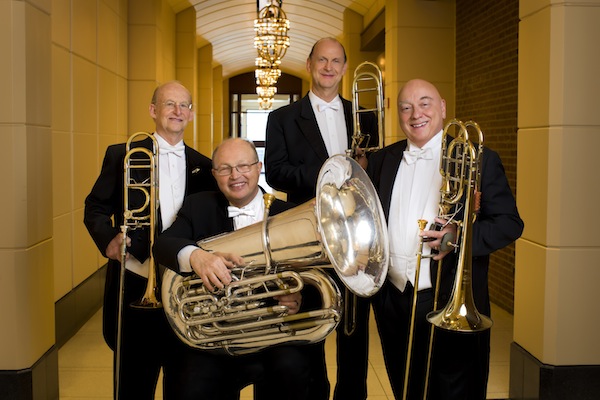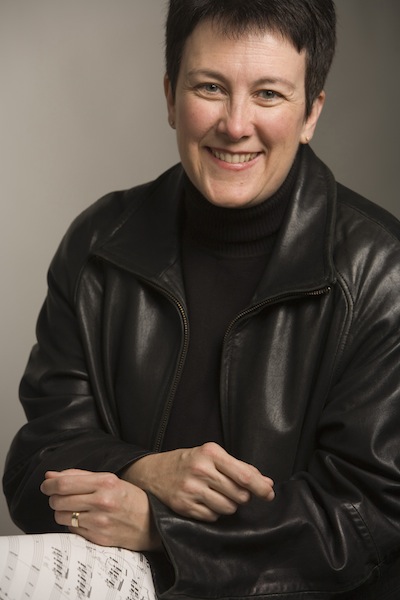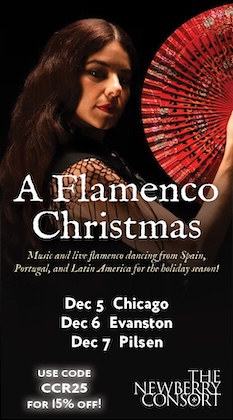CSO’s low brass rise to top billing with Higdon concerto premiere

At a rehearsal room at Symphony Center members of the Chicago Symphony Orchestra’s renowned brass section described to composer Jennifer Higdon their hopes – and fears – as she embarked on the composition of a concerto for low brass instruments.
Well aware of the usual expectations for tuba and trombones, they asked her to avoid producing a noisy, quasi-humorous romp that treated their presence in front of the orchestra as a curiosity. Give us real music, they urged, music that shows the lyric capabilities of instruments that speak with quiet power in Schumann’s “Rhenish” Symphony and so many passages in Wagner operas. They gave her a DVD they recorded of Debussy.
“My main concern was that it be a serious piece of music and not a showpiece for large-sized animals,” said Jay Friedman, the orchestra’s principal trombone, who joined the ensemble in 1962, as part of the generation of musicians who established the brass section’s towering reputation. “We don’t want dancing hippos. I asked her not use any gimmicks like different mutes, glissandos, a lot of percussion, a lot of gimmicks to kind of cover up the fact that the music’s not that great.”
Higdon’s Low Brass Concerto for two trombones, bass trombone and tuba will receive its world premiere Thursday night with the Chicago Symphony under the baton of Riccardo Muti. The orchestra will then take the concerto, a co-commission with the orchestras of Philadelphia and Baltimore, on a five-city tour, including a concert at Carnegie Hall. Also on Thursday’s program is Stravinsky’s Scherzo fantastique, Britten’s Four Sea Interludes from Peter Grimes and Chausson’s Poème de l’amour et de la mer, with mezzo-soprano Clémentine Margaine.
No orchestra would achieve the stature of the Chicago Symphony without world-class players in every section. Yet the brass players have long held special status, enjoying a reputation for excellence established by a generation of musicians that has included principal trumpet Adolph Herseth, tubist Arnold Jacobs and principal horn Dale Clevenger.
Was Higdon offended at being instructed how to compose the work?
“No, I love it actually,” she said, in a telephone interview. “Because I end up having to make a million decisions as it is, and I’d like the piece to fit the personalities, the preferences of the players. They’ll do a better job performing it.”
And while she would welcome advice in composing any concerto (Hilary Hahn, she recalled, kept pressing her to make her Violin Concerto more difficult), she was particularly glad to receive suggestions for a commission she undertook with some trepidation.
“I thought, a low brass concerto? Really?” she said, recalling the moment she was asked to compose the work. “But then I thought, wait a minute, it’s the Chicago Symphony. I have to do this one. They’re so famous for their brass section. It sounds difficult. But I can’t pass this up.”
In conversation, Higdon is as approachable as her music. Both her manner and her compositional style appear to reflect an almost conscious effort to steer clear of the stuffiness, and remoteness that has cost classical music so much of its potential audience. Her music is tonal and frankly emotional but feels clean, contemporary and original. Best known for her searing tone poem blue cathedral, she has achieved both popular success and establishment approval, winning the 2010 Pulitzer Prize for her Violin Concerto.
Happy to accommodate the Chicago brass musicians, within the scope of her musical instincts, she set to work.
“I thought about writing them soft, lyrical lines, writing them power music that has some sense of depth to it,” she said. “They also mentioned that they liked playing in duets, so I have a duet in there for the two tenor trombones, a duet for the bass trombone and the tuba, and they also all have solos. They’re such good players.”
Her strengths as a composer matched up well with the Chicago brass players’ hopes for the new concerto.
These musicians, whose instruments produce some of the most stirring passages of Mahler, Tchaikovsky, Prokofiev and countless other composers, wanted a work that would be more than just a concert oddity, something trotted out on rare occasions to give the tuba and trombones a little time in the spotlight before they were ushered back to the rear of the orchestra where they belonged.
“We didn’t want this commission to just be technical fireworks—higher, faster, louder,” said tubist Gene Pokorny. “What this [orchestra] section does best is we have a sense of line, a sense of legato playing—singing-playing, not necessarily really quick playing.”
“In the Beethoven Violin Concerto, Beethoven knew the soloist who was going to be playing it, what that person’s personality was and what that person could bring to the table,” he said. “To play a generic solo piece–well you try to take ownership of it anyway–but it seems to be a much more significant exploration if the piece was specifically written for a particular person who had a particular way of playing.”
This will be Higdon’s 11th concerto. In concerto writing, each class of instruments brings its own challenges, and for the brass, an important requirement turned out to be that the musicians not drop dead during the performance.
“You can’t have them playing constantly,” Higdon said. “Hilary Hahn can just play constantly. You just bow. It’s different when you have an embouchure and you need breath. Big brass instruments need a little more time, a little more break. You have to think of the physical constraints when you make the decisions on how you do phrases, how long they can play, where you need breaks. “
Judging from the initial rehearsals with piano accompaniment, Friedman said he’s happy with the work. There are duets, there’s color, there’s lyricism. There’s no low comedy.
“I like the style of the writing,” he said. “It’s not a showpiece. The style of the piece is very accessible, not in a pop-sy way. It’s nice writing for the instruments. It’s lyrical, while not being sappy.”
Riccardo Muti will lead CSO soloists and the Chicago Symphony Orchestra in Jennifer Higdon’s Concerto for Low Brass 8 p.m. Thursday, 1:30 p.m. Friday and 8 p.m. Saturday at Symphony Center. The program also includes Stravinsky’s Scherzo fantastique, Britten’s Four Sea Interludes from Peter Grimes, and Chausson’s Poème de l’amour et de la mer with mezzo-soprano Clémentine Margaine. cso.org; 312-294-3000
Posted in Uncategorized





